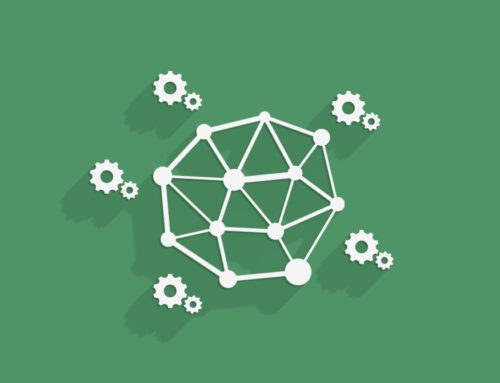Sociopolitical Networks
Sociopolitical networks are the networks of connections between members within a society that influence and shape collective decision-making and collective action. Sociopolitical networks may involve many overlapping heterogeneous and distributed networks throughout society, that influence collective decision making and the distribution of power.1 Such networks might include; social media and communications networks, economic and financial networks or cultural and ideological networks.2 The study of sociopolitical networks shifts the focus of political analysis away from an emphasis on the formal political structures of the nation state and towards the more distributed and complex set of informal social networks within the broader society.3 The network approach to political science adopts a relational paradigm where social and political phenomena are seen to be best understood in the context of the relationships between people and groups which are seen to produce the outcomes that interest political scientists. Such networks are typically nonlinear and involve emergent phenomena.4 As such the tools of political network analysis differ from the more traditional methods used within the social sciences – namely those of statistical analysis – by looking at visualizing whole networks of connections.4
Network Society
The significance of network theory as a tool for studying sociopolitical phenomena has greatly increased as of the past few decades with the ongoing proliferation of networked forms of organization; as industrial societies are becoming transformed into network societies.5 Network society is the expression coined by social theorists in relation to the social, political, economic and cultural changes caused by the spread of networked, digital information and communications technologies. The theory of the network society has been expounded upon by a number of thinkers, most notably the sociologist Manuel Castells in his book The Rise of The Network Society.6 In his interpretation, the rise of networks as the dominant modality for sociopolitical organization reshapes social structures as they no longer need to be tied to a physical space but simply to networks of information and communications flow. Traditional organizational structures based on geographical proximity and the synchronicity of time, come to increasingly exist alongside a new space of networks, where space is compressed and time becomes asynchronous; what Castells calls the space of flows and timeless time. These new organizational structures become based on the processing and exchange of information and ideas. Ideas become reify through information technology to make them something greatly more important in the immediate workings of society.6
The theorist Van Dijk likewise looks at how a combination of social and media networks shape societies primary modes of organization and most important structures at all levels. He compares this type of society to a mass society that is shaped by groups, organizations, and communities – the ‘masses’ – organized in physical co-presence.7 In a network society increasingly power shifts from a traditional form – which is defined by one’s position within a hierarchy, to increasingly becoming linked to one’s access to and capacity to use networks enabled by technology. As networks come to occupy, mediate, and coordinate ever more spheres of social life, political organization becomes reconfigured around access – or lack of access – to global networks.8 Castells argues that these networks are highly efficient because they are very effective at managing complexity and at adapting to changing conditions. Thus as our socioeconomics systems become more complex and more dynamic the divide between those who are able to access and use these global networks, relative to those who continue within existing Industrial Age institutional structures becomes greater as two parallel systems coexist.8
Castells argues that these networks are highly efficient because they are very effective at managing complexity and at adapting to changing conditions.9 Thus as our socioeconomics systems become more complex and more dynamic the divide between those who are able to access and use these global networks, relative to those who continue within existing Industrial Age institutional structures becomes greater as two parallel systems coexist. This, in turn, reshaped sociopolitical organization on the macro-level. Traditional political divisions move to the background as new ones emerge based on a distinction between those who have the resources to access these global networks – in terms of education, cultural receptiveness, and technological capacity – and those who do not. We can note in passing how this divide has already fed through to disrupt traditional political dynamics as it has been expressed in the split of the American middle class into an upper middle and a lower middle with resulting political repercussions; in the divide in England over votes on Brexit; and on a global level between nations that want to close their borders and those that want to access these global economic networks; or those cultures that want to form part of a prevailing global culture and those that reject it.10
Relational Paradigm
This change in the underlying structure of our sociopolitical systems then, in turn, requires a recalibration of methods and models within the social sciences in order to maintain relevance. Before dealing with specific models, this change in approach first requires a reconfiguration of basic assumptions. Network theory is a relational paradigm as it is looking explicitly at the relations between actors, this is in contrast to a more traditional paradigm that focuses on discrete entities, people, and organizations. Most of social science, political science, and policymaking to date is done based upon data sets that consist solely of data about individuals and their properties, which is of course only half the picture, just as important is how those people are interrelated.12 We are increasingly waking up to the fact that we have been doing social science and policy making as if we were dealing with groups of people who have nothing to do with each other. In the past, we put a lot of effort into building up databases about individual people but now we have an ever growing amount of relational data about people, coming from social networks and other sources for free.13
In political and social science, we tend to focus on well-defined organizations, as these formal organizations are easier to identify and they limit the number of entities that we need to track to a level that is more easily comprehensible. However, this focus on the parts of the system can work to blind us to the complexity of the real situation. Viewing things in an object-based paradigm leads to an incomplete understanding and ensuing incomplete policies guided by this.14 Most notably it leads us to focus on the centralized formal institutions of political organization but blinds us to the complexity of the multiplicity of distributed informal overlapping networks that make up any society. As information technology greatly facilitates the development of these distributed information networks they become ever more important to understand what is going on in the system and in such a case it becomes important to switch our focus from looking primarily at the formal institutions to looking at the network of informal organizations around them. Society is just as much about who you are as with whom you are; when one continues with a focus on the parts when connectivity increases then things will stop making sense.14
Network Density
The primary parameter that affects the overall workings of a networked system is its density of connections. Going from low connectivity to high connectivity is a paradigm shift that induces new patterns and behavior in the overall system; new rules for survival and success. At a high cost of making and maintaining connections, the network will have a low density. With a limited number of connections things are connected in a limited number of ways, which makes the system relatively linear; that is to say there will typically only be one way to get from A to B. To conserve on the limited degree of overall connectivity resources and information typically have to flow to a central point from where they are then redistributed.15 Thus creating centralized organizations and a hierarchy based on one’s proximity to the center, where the mass of resources are flowing through – this is the same for a transport network, a financial network or a sociopolitical network. With a limited degree of connectivity, organizations can have strong boundaries and be defined by those boundaries. As the cost of transaction is high most of the organization’s resources need to lie within the organization, which in turn, works to reinforce the dichotomy between inside and outside and strengthen the boundary condition.16 In such a world it makes sense to focus one’s analysis on the individual parts and their properties; those who have more resources internal to their boundary will likely prevail and be able to define the overall system.
As it becomes easier to make connections within the system, both the number of connections proliferate but also the number of channels may also proliferate, meaning that things do not just go on in a linear fashion with everything flowing to the center and back out, instead things can connect directly peer-to-peer.16 Information and resources can start to flow and connect things in a multiplicity of ways, the system becomes nonlinear in that there may now be a multiplicity of ways to connect things, with options as to which of those channels may be chosen. In such a world the nature of power changes. As power is relational and it is in one’s capacity to restrict other people’s possible actions to those that one desires it is much more easily exorcised in a world where the are limited possible connections, where one can directly control those channels. However, as the number of degrees of freedom for the individual in terms of connectivity increases the centralization of power becomes diffused out into the network.17
Moisés Naím, the author of The End of Power notes this when he writes. “The once uncontested leaders of every arena — from religion to government and from military to finance — are increasingly aware that they face unprecedented constraints in what they can do with the power they have. Power has become easier to get, harder to use and far easier to lose. Big powers everywhere face a reckoning. As insurgents, fringe political parties, upstart citizen media outlets, leaderless young people in city squares, and charismatic individuals who seem to have ‘come from nowhere’ shake up the old order, they are undermining and thwarting the once unquestioned mega players at every turn.” Naim concludes that “That power — as we knew it — is over.”18 In the book, he writes about the extent to which recent developments have made traditional sources of centralized power – whether political, corporate, or cultural – newly vulnerable to challenges from smaller, nimbler entities. However, he warns that the decline of the superpower as an authority providing global structure is producing less stability than ever before. He believes that a situation where smaller actors have the power to veto but not dictate, essentially to destroy but not create, is a recipe for gridlock, anarchy, or both.19
In a world of connectivity, closed organizations are rendered less effective in the face of networks that can aggregate resources on demand.20 In adapting to this new context, traditional organizations are required to go through a process of unbundling. We go from a world where everything is held within a predefined hierarchical structure and managed by a formal organization, to dynamic networks that work to aggregate the distributed resources within very large groups of people – in the way that Facebook or Wechat do. These networks create value by connecting people who have powerful tools of computation in their hands and a desire to create content.21
As resources become more widely distributed within the society, it becomes about creating networks for accessing and using those resources outside of formal organizations.22 Organizations that try to go on doing everything within formal structures of ownership and management start to appear cumbersome in the face of agile and dynamic networks that are better able to respond to the context. Probably the most important structural transformation that takes place in this process of increasing connectivity is as Castells writes in his book, “the logic of the network is more powerful than the powers of the network.”23 When connectivity increases it is possible to access resources external to the organization more easily, thus sharing resources across the network becomes greatly more viable. The result of this is that the amount of resources that can be easily and quickly accessed on the network becomes greatly larger than what may exist within any one organization.24 The network as a whole becomes greater than any of its parts and those who can orchestrate networks become more powerful than those who can control any of the individual formal organizations within it. Traditional organizations come to find themselves embedded within, and increasingly constrained, by these global networks.
The Internet is a classical example of this, more information can be now accessed on the Internet than any organization could possibly have. This has shifted the balance of power away from those organizations that once had the information – like universities, governments, intelligence agencies etc – toward anyone who can access the network, which is most people. But equally, it has shifted it to those who can orchestrate the network; organizations like Google or Wechat that orchestra people’s access to that network are greatly more powerful in shaping people’s perception than any formal closed organization. None can own or control the network but those who can orchestrate it become the superpowers. Network orchestrators are platforms and another term for a network society is a platform society.25 In a network society, the design of the platform organization is better able to harness the underlying structure and resources, they become the dominant form of organizational mode; enveloping the traditional industrial age organization. Today in business and economics we now understand the mechanics of why platforms become the dominant organizational modality within a network society and there are even mathematical models for understanding this in economics.26 Sangeet Paul Choudary one of the preeminent theorists on platform organizations contrast them with the Industrial Age model – which he calls the pipeline business model – and notes that “when a platform enters a pipeline firm’s market, the platform almost always wins.”27 Which is very similar to the previous dynamic during the development of the Industrial Age where whenever a bureaucratic model of organization entered a new sphere of life it came to dominate.
Formal and Informal Structures
Societies and organizations are made up of both nonlinear distributed networks of informal organization and formal institutions.28 The formal structures emerge out of, and are determinant of, the informal structures. Although we may often only see the formal structures they are contingent upon the much more complex network of informal structures within the organization. Formal political institutions are defined by a set of formal relations of power – in the way that a hierarchy defines a chain of command – a set of relations involving superior and inferior actors, and thus a formal institutionalized structure through which power is channeled. Informal sociopolitical organizations though, often have no formal power structure; the resource that flows through the informal networks of civil society, is instead what we call social capital. Social capital can be understood as the networks of relationships among people within a given community, through which they share common norms, values, and understanding that facilitates cooperation and thus enables that society to function effectively.29 Social capital is a measure of the degree of potential for cooperation within a community given such a network. Social network analysis helps us to model and identify these informal networks and how they influence political processes.
Political systems represent the processes through which people make collective decisions and implement them. The more the trust, consensus, and cooperation within the community network, the less the need for common decisions to be imposed through formal power structures. To achieve effective political organization requires both connectivity between members but also institutions built on that connectivity that enables prosocial behavior. Prosocial behavior is acting to the benefit of society in general.30 The Handbook of Social Psychology explains that prosocial behaviors refer to “a broad range of actions intended to benefit one or more people other than oneself.”31 Pro-social behavior plays a vital role in maintaining social bonds and in making social transactions possible.32
Out of the combination of connectivity between members and prosocial behavior combined, one gets something that is very valuable to a community, the infrastructure for consensus and cooperation in making collective decisions and taking collective action. We can call this social capital, the value that is inherent in the overall sociopolitical network of the community and which can be deployed towards enabling collective action. Political capital refers to the trust, consensus, and cooperation amongst members that enable them to achieve collective political decisions without their imposition through forceful political structures.33 Thus in looking at the political system of any people we need to both identify the formal and informal structures. The formal structures will be made manifest but they will only give us a limited degree of insight into the systems overall workings, and often the manifest institutions of a society are simply those institutions that the society wants you to see and can thus often be misleading. To gain a full understanding it is required that one look at the informal networks of connections.
Network Integrity
The central factor here being the degree of integrity to the network and the degree of prosocial behavior, thus the overall amount of social capital that is flowing through the system. For example, the single best predictor of crime within a neighborhood in the US is how many of the people in the community know each other.34 In the absence of people knowing each other and looking out for each other, we will likely have to impose formal authoritative structures to police the community. We may well then praise ourselves for how well the police force does, but we would, of course, be doing better if they were not needed there in the first place.
When the network has integrity and there are resources flowing through it, that incentivizes people to form part of it and contribute to it. Likewise, having a functioning network makes it then possible for people to build solutions on top of the network by tapping into its resources; instead of everyone having to reinvent the wheel each time they want to create a social organization. Just as with the rise of the Internet we can now build organizations based on that network, that harness the common resources available, the same is true for social, political and economic organizations. Now that we have built these global supply chains, cities and countries like Singapore and China can build solutions on top of them by tapping into the flow of the resources and performing a required process, whether that is manufacturing or financial services. The same is true for functioning social networks, once people within a community are connected via information technology and there is a limited degree of social capital one can build solutions on top of this; Apps for people to report graffiti, potholes, to make local decisions that they care about etc. In such a case the emphasis shifts from formal political structures of control and management and the provisioning of discrete public services to the integrity of the social network and fostering the flow of social capital that is available on that network so that people can build their own solutions out of it.35
1. Political Networks. (2017). Google Books. Retrieved 28 June 2017, from https://goo.gl/12Pz9i
2. (2017). Homerdixon.com. Retrieved 28 June 2017, from https://homerdixon.com/wp-content/uploads/2016/10/A-Complex-Systems-Approach-to-the-Study-of-Ideology-Cognitive-Affective-Structures-and-the-Dynamics-of-Belief-Systems.pdf
3. (2017). Fs2.american.edu. Retrieved 28 June 2017, from http://fs2.american.edu/jyoung/www/documents/mcclurg_young_ps_2011.pdf
4. McClurg, S. (2017). Political Networks: Theory, Concepts, and Methods. Academia.edu. Retrieved 28 June 2017, from https://www.academia.edu/1738719/Political_Networks_Theory_Concepts_and_Methods
5. Network society | Wikiwand. (2017). Wikiwand. Retrieved 28 June 2017, from https://www.wikiwand.com/en/Network_society
6. The Rise of the Network Society. (2017). Google Books. Retrieved 28 June 2017, from https://goo.gl/Qg9o4W
7. The Network Society. (2017). Google Books. Retrieved 28 June 2017, from https://books.google.ie/books/about/The_Network_Society.html?id=1T70ygAACAAJ&redir_esc=y
8. (2017). Faculty.georgetown.edu. Retrieved 28 June 2017, from https://faculty.georgetown.edu/irvinem/theory/Castells-Network-Power-2011.pdf
9. Castells and the Network Society. (2017). YouTube. Retrieved 28 June 2017, from https://www.youtube.com/watch?v=tLF5J8Y5zyg
10. Manuel Castells – The Crisis of Liberal Democracy: from Brexit to Trump and Beyond. (2017). YouTube. Retrieved 28 June 2017, from https://www.youtube.com/watch?v=zhA73_MB9b4
11. (2017). Fs2.american.edu. Retrieved 28 June 2017, from http://fs2.american.edu/jyoung/www/documents/mcclurg_young_ps_2011.pdf
12. “Complex Social Systems” Martin Hilbert. (2017). YouTube. Retrieved 28 June 2017, from https://www.youtube.com/watch?v=XcsojELRkBU&t=944s
13. TEDxMidAtlantic 2011 – Duncan Watts – The Myth of Common Sense. (2017). YouTube. Retrieved 28 June 2017, from https://www.youtube.com/watch?v=D9XF0QOzWM0&t=430s
14. “Complex Social Systems” Martin Hilbert. (2017). YouTube. Retrieved 28 June 2017, from https://www.youtube.com/watch?v=XcsojELRkBU&t=944s
15. Week 3 Political Networks Lecture. (2017). YouTube. Retrieved 28 June 2017, from https://www.youtube.com/watch?v=_lGfJB48r28
16. Organizations, & Shirky, C. (2017). Here Comes Everybody. Goodreads. Retrieved 28 June 2017, from http://www.goodreads.com/book/show/1998185.Here_Comes_Everybody
17. Freedom, & Benkler, Y. (2017). The Wealth of Networks. Goodreads. Retrieved 28 June 2017, from http://www.goodreads.com/book/show/14721.The_Wealth_of_Networks
18. Power Has Become Easier to Get, Harder to Use and Easier to Lose. (2014). HuffPost. Retrieved 28 June 2017, from http://www.huffingtonpost.com/moises-naim/power-has-become-easier-t_b_4651869.html
19. Loofbourow, L. (2015). The End of Power by Moises Naím review – a study in mass alienation. the Guardian. Retrieved 28 June 2017, from https://www.theguardian.com/books/2015/jan/15/the-end-of-power-moses-naim-review
20. Freedom, & Benkler, Y. (2017). The Wealth of Networks. Goodreads. Retrieved 28 June 2017, from http://www.goodreads.com/book/show/14721.The_Wealth_of_Networks
21. Amazon.com: Platform Scale: How an emerging business model helps startups build large empires with minimum investment eBook: Sangeet Paul Choudary: Kindle Store. (2017). Amazon.com. Retrieved 28 June 2017, from https://www.amazon.com/Platform-Scale-emerging-business-investment-ebook/dp/B015FAOKJ6
22. Organizations, & Shirky, C. (2017). Here Comes Everybody. Goodreads. Retrieved 28 June 2017, from http://www.goodreads.com/book/show/1998185.Here_Comes_Everybody
23. Theories of the Information Society. (2017). Google Books. Retrieved 28 June 2017, from https://goo.gl/4cAHXo
24. Freedom, & Benkler, Y. (2017). The Wealth of Networks. Goodreads. Retrieved 28 June 2017, from http://www.goodreads.com/book/show/14721.The_Wealth_of_Networks
25. #AoIR2016: Opening Keynote “The Platform Society” by José van Dijck. (2017). YouTube. Retrieved 28 June 2017, from https://www.youtube.com/watch?v=-ypiiSQTNqo
26. (2017). Ebusiness.mit.edu. Retrieved 28 June 2017, from http://ebusiness.mit.edu/platform/agenda/slides/5%20Platforms%20Transitions.pdf
27. Pipelines, Platforms, and the New Rules of Strategy. (2016). Harvard Business Review. Retrieved 28 June 2017, from https://hbr.org/2016/04/pipelines-platforms-and-the-new-rules-of-strategy
28. (2017). Pure.au.dk. Retrieved 28 June 2017, from http://pure.au.dk/ws/files/32302046/0003088.pdf
29. Directorate, O. (2017). OECD Glossary of Statistical Terms – Social capital Definition. Stats.oecd.org. Retrieved 28 June 2017, from https://stats.oecd.org/glossary/detail.asp?ID=3560
30. Prosocial definition and meaning | Collins English Dictionary. (2017). Collinsdictionary.com. Retrieved 28 June 2017, from https://www.collinsdictionary.com/dictionary/english/prosocial
31. Pro-Social and Anti-Social Behaviour. (2017). Google Books. Retrieved 28 June 2017, from https://goo.gl/b1EbTv
32. (2017). Ijis.net. Retrieved 28 June 2017, from http://www.ijis.net/ijis8_1/ijis8_1_bosancianu_et_al.pdf
33. Schugurensky, Daniel (2000-06-02). “Citizenship learning and democratic engagement: Political capital revisited”. Conference Proceedings. 41st Annual Adult Education Research Conference. Vancouver, Canada. pp. 417–422.
34. Neighborhood Characteristics and Depression Retrieved 28 June 2017, https://goo.gl/QsuYf1
35. (2017). Mitpressjournals.org. Retrieved 28 June 2017, from http://www.mitpressjournals.org/doi/pdf/10.1162/INOV_a_00056





